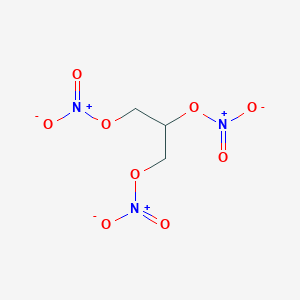Acute myocardial infarction
Adult: Initially, 15-20 mcg/min via slow infusion, then increased gradually by increments of 10-15 mcg/min until an adequate response is achieved.
Intravenous
Unstable angina
Adult: Initially, 10 mcg/min via slow infusion, may increase in increments of 10 mcg/min at approx 30-minutes intervals according to patient response.
Intravenous
Induction of hypotension or control of hypertension during surgery
Adult: Initially, 25 mcg/min via slow infusion, may be increased in increments of 25 mcg/min at 5-minute intervals. Usual dose range: 10-200 mcg/min, adjusted according to patient response. Max: 400 mcg/min.
Intravenous
Congestive heart failure
Adult: Initially, 20-25 mcg/min via slow infusion, may be decreased to 10 mcg/min, or increased in increments of 20-25 mcg/min every 15-30 minutes until desired response is achieved.
Oral
Angina pectoris
Adult: Prophylaxis: As extended-release cap: Initially, 2.5-6.5 mg 3-4 times daily, may be increased up to 26 mg 4 times daily if necessary.
Rectal
Chronic anal fissure
Adult: As 0.2% ointment: Apply 1-1.5 cm strip of ointment into the anal canal tid. As 0.4% ointment: Apply 2.5 cm (approx 1.5 mg) 12 hourly for up to 8 weeks.
Sublingual
Angina pectoris
Adult: Treatment for acute attacks: As tab: 300-600 mcg placed under the tongue; dose may be repeated at 5-minute intervals for a total of 3 doses. As aerosol spray (400 mcg/spray): 1-2 sprays under the tongue, then close the mouth, dose may be repeated at 5-minute intervals if require. Max: 3 doses. Prophylaxis: As tab: 300-600 mcg, 5-10 minutes prior to activities that may precipitate an attack. As aerosol spray (400 mcg/spray): 1 or 2 sprays, 5-10 minutes prior to activities that may precipitate an attack. Seek medical care if symptoms are not resolved after a total of 3 doses.
Topical/Cutaneous
Angina pectoris
Adult: Prophylaxis: As 2% ointment: Apply 1-2 inches 3-4 hourly as necessary, onto convenient area of the skin (e.g. chest, thigh, or arm), spread thinly without rubbing in. May cover the area after application. Dose may be titrated according to patient tolerance.
Transdermal
Angina pectoris
Adult: Prophylaxis: As monotherapy or in combination with other anti-anginal treatment: As patch releasing 5 or 10 mg/24 hours: Apply 1 patch daily onto a fresh area of skin (e.g. chest, upper arms, thigh or shoulder). Max: 20 mg daily. Alternatively, 0.2-0.4 mg/hour initially then titrate to 0.4-0.8 mg/hour. Patch may remain on skin for 12-14 hours, followed by 10-12 hours patch-off period.
Transdermal
Extravasation injury, Phlebitis
Adult: Prophylaxis secondary to venous cannulation: As patch releasing 5 mg/24 hours: Apply 1 patch distal to the IV site, remove patch after 3-4 days, then apply replacement patch to a different area of the skin. Continue for as long as IV infusion is maintained.




 Sign Out
Sign Out




